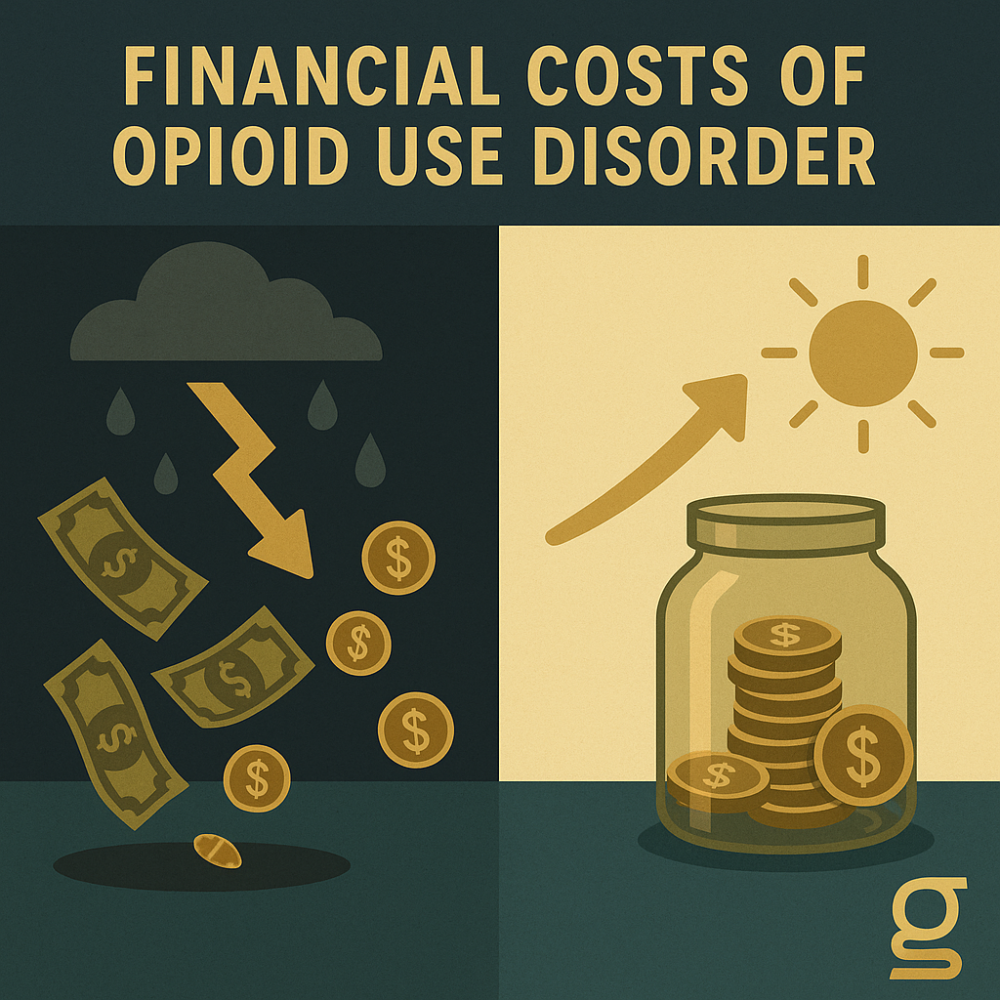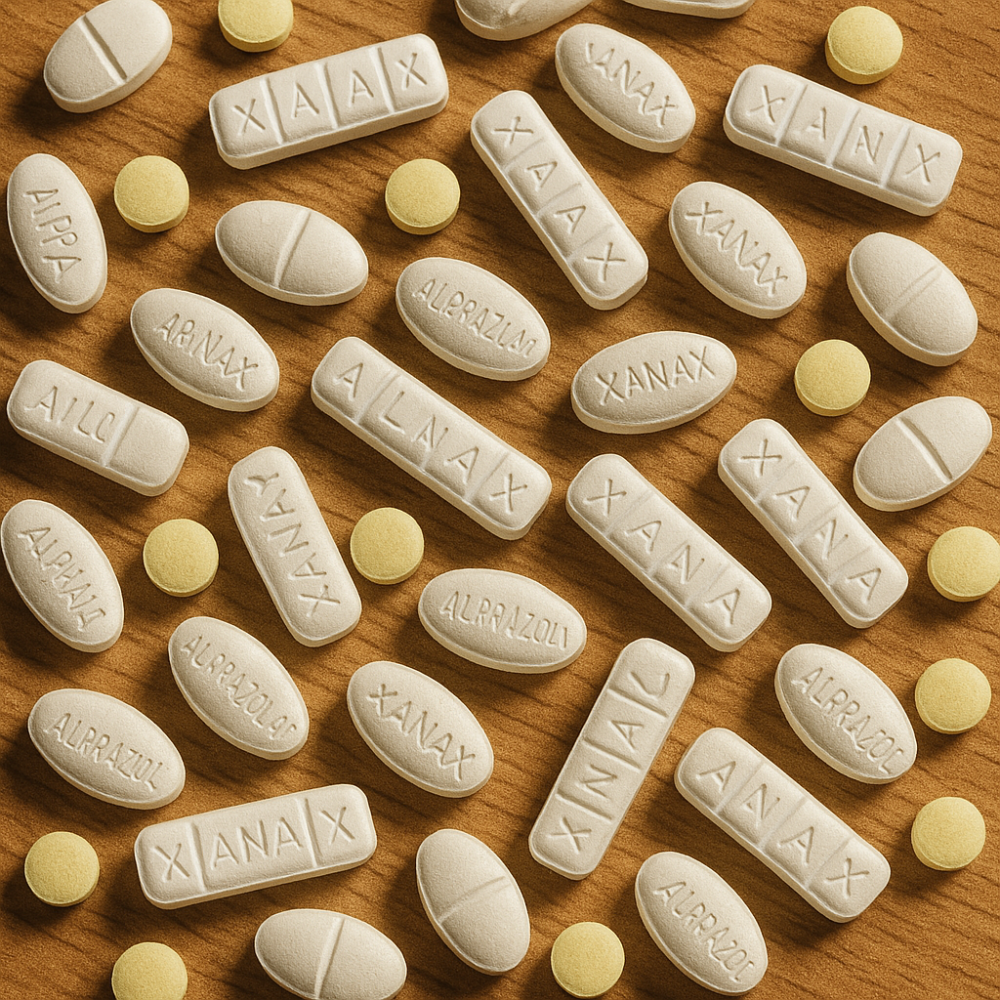Steve Carleton, LCSW, CAS, is the Executive Clinical Director at Gallus Medical Detox Centers and an Adjunct Professor in the University of Denver Graduate School of Social Work.
Gallus clients’ stories usually start the same way, “I started using pain killers after an injury” — insert traumatic event. Before they knew it, their doctor stopped prescribing to them. After this, the stories go many different directions but end similarly, “then I was introduced to M30s.”
Fentanyl has come on strong over the last 5 years. For many providers, including myself, initially it was just another drug. There was no way of knowing at that time how insidious it would become. In my work at Gallus the last two years, clients have started to catch on more, but it is all too common for a client to be surprised when their urine drug screen comes back positive for Fentanyl. “I thought I was taking Oxy?” is the most common response I have seen.
In identifying the path forward, we must first appreciate how we got here. Compassion comes from understanding. There are not many out there that have not been impacted by addiction. Whether it is someone on the street, a co-worker, friend, or close loved one, sooner or later people come face to face with the chaos and damage caused by substance use disorders.
The Historical Progression to Fentanyl
The Sackler family with Purdue Pharma introduced OxyContin in 1996. OxyContin is the brand name for slow-release oxycodone. Despite early studies showing adverse outcomes, the company pedaled the drug to health care providers as a solution for chronic pain. The target audience was those suffering from pain related to an injury or cancer.
The amount of money invested in marketing and sales was staggering. Smooth talking and good-looking Purdue reps were sent into communities with one mission: get doctors to start prescribing OxyContin! By the mid-2000s the problem was completely out of control. Unassuming patients and doctors were finding themselves increasing prescriptions rapidly and experiencing disastrous effects from legally obtained medicine.
The hardest hit population was perhaps those in the Rust Belt. “Chronic Pain Clinics” start to pop up as some unsavory providers began to capitalize on the problem alongside Purdue Pharma. In the DocuDrama “Dopesick” about this history you witness patients being asked a few questions before they are given a prescription. As collective tolerance and demand for the drug rose, so did the dosage of their “Golden Goose” home wrecker of a medication.
Oxycodone pills were all branded similarly. They had letters, OC, or M most commonly, and a number which indicated the dosage. Most were round pills but as they increased in dosage, they became rectangular in shape. On the streets today are “Blues” or “M30s.” These pills are counterfeit and made to look like a pharmaceutical. In reality they are crudely pressed by dealers with trace amounts of Fentanyl, fillers, and now also include synthetic sedatives to give the user a smoother effect.
In the early 2000s, OxyContin was what everyone was after. The slow-release design of the pill was a coating that was simply removed by dampening the pill and rubbing it off. With the coating removed people can smoke, inject, snort, or swallow the pill and effects were more immediate. The problem was well known and established by 200F7 when Purdue plead guilty to misbranding the drug. Over the next decade the manufacturing and pushing of OxyContin slowed down.
While this slow down and accountability was critical, it left a void. Millions of Americans were physically dependent on opiates and left searching for a way to either maintain the addiction or find a way off. Street opiates were available, and heroin became a viable, albeit destructive, alternative. With the newfound, increased demand for heroin a supply problem developed.
Fentanyl became the solution because it is 50x more potent than heroin. Imagine for a second you are a drug smuggler. What is going to be easier to traffic, 50 bricks of heroin or one brick of Fentanyl? The other benefit is the manufacturing. Heroin grow operations have been replaced by clandestine labs. The overhead and law enforcement exposure are also reduced.
Effects and the high with oxycodone, heroin, and fentanyl are more similar than not. All produce a sedating effect and powerful euphoria. Descriptions of the high vary. “It is the best feeling in the world” being at the top of the list. The one metaphor that sticks out is that the high feels like being put into a warm cozy impenetrable bubble. Nothing bothers you and everything feels perfectly right in the world and life. It is easy to understand how this high would be more and more desirable as a person’s life becomes more and more unmanageable. It is a vicious and unforgiving cycle.
The Experience of Addiction
The original target population for oxycodone was low hanging fruit for several reasons. Top of the list being that they suffer, and providers want to make patients feel better. It was a perfect storm. The early benefits of pain relief in these patients are astounding. Too many times at Gallus Detox I have heard “this drug felt like the solution to all my problems in the beginning.”
The other vulnerability for using Fentanyl, or any substance one can abuse, is underlying mental health struggles. The majority of people with an addiction have experienced trauma or have an underlying mental health issue. Scholarly sources agree that between 60 and 70% or addicted individuals have experienced trauma and between 30 and 50% have an underlying mental health disorder, depression, anxiety, mood disorder, psychotic disorder, etc. Uncovering “what came first, the chicken or the egg?” is essential to recovering.
The ugliness of opioids, prescribed or purchased of the street, reveal themselves quickly. The benefits give way to an increased tolerance. More of the substance is needed for the desired effect. In turn people start to run out earlier and earlier causing uncomfortable withdrawals. The withdrawals from opiates feel like the worst flu you ever experienced. At this stage the hunt is on to get more. As things start to spiral out of control relationships with loved ones, friends, and work start to disintegrate and behavior gets risky and risky to buy, use, and recover from the substance.
Earlier this year we were informed that 108,000 people died from opioid overdose in the US in 2021. An unacceptable number of others go to jail or prison as a direct result of addiction. Estimates here have been as high as 82%. For many this is how the journey ends, death or incarceration. That is a sad reality that must be contended. However, this is by far not the only outcome.
Many people recover and thrive in recovery and this trend will only improve with time. Today there is progress in reducing stigma around both mental health and substance use issues. As the country, collectively people are opening up and sharing the struggles they have faced and the positive and negative ways they have coped.
When thinking about your own beliefs, opinions, and views of mental health, addiction, and recovery, ask yourself; what do I project when these topics come up with people? If you don’t like the answer to this question, it’s never too late to make a change. After all, I have never met anyone that has maintained a perfect balance emotionally and cognitively. Sooner or later we all take a turnover the barrel.
Getting Better, the Gallus Way
In my 17 years in treatment of substance use and mental health I know only one thing for certain about who will be successful. If I could paint a saying on the walls of every treatment setting it would be, the only predictor of success is days in a recovery environment. I know from working with thousands of struggling people that those that connect survive and those that embed thrive. The more effort people put into creating a support system that they can lean on and that can lean back on them, the more likely they are to succeed in building a better life.
Experiences in treatment vary dramatically. If you are lucky, you will find compassionate and caring providers that will walk alongside you as you bump along the path towards becoming whole again. If you are unlucky, you might find yourself in a judge-y and blaming environment where providers think suffering and feeling bad has some type of intrinsic value. Though not impossible, it is more rare people do well in this type of setting.
Historically, recovering from opioid addiction involves an uncomfortable detoxification. As depicted in movies like Trainspotting and Basketball Diaries, this is a disturbingly rough process for people. At Gallus we eliminate the physiologically painful experience for our clients.
There is no immediate value in suffering before a person recovers. Many in recovery look back on painful withdrawals and say, “I never want to go through that again.” The reality is that the fear and pain of withdrawal keep people sick for longer. Imagine that you knew you would get the worst flu of your life if you didn’t take a pill. You have a job, bills, and maybe dependents to take care of and getting sick will only lead to more problems. What do you do?
Gallus has been the only detox I have experienced that gets it right. We don’t wait until people are sick before we provide medical intervention. The humane thing to do with withdrawals of any kind is to taper people off the substance. This should not be a novel approach but unfortunately it is in the field of addiction treatment.
In detox from Fentanyl, Gallus deploys an Accelerated Micro Induction. Long story short, we give small amounts of Subutex, a partial opiate, which covers the unhappy opiate receptors that cause the physical discomfort of withdrawal. In this protocol, there is risk that the client will experience precipitated withdrawal (sudden onset of acute withdrawals). Our expert medical staff are well trained in evaluating patient symptoms and ensuring the pace of the micro induction does not induce this response. For the portion of Gallus patients that have detoxed from opiates in the past, the feedback is overwhelmingly positive. We often hear, “why doesn’t everyone do it this way?”
Next Steps and Collaboration in Recovery
Detox at Gallus is the front door to recovery. We want to make sure that the opportunity for establishing connection is not lost. Helping patients through withdrawal more comfortably instills hope and confidence in the process. People inherently trust others more if they feel they care about them. The saying goes, “people want to know how much you care far more than how much you know.”
In trying to discover what came first, the substance or the pain, Gallus providers ask clients to tell us their life story. In this exploration, clients tell us what’s important, rather than the provider telling the patient what’s important through formal questions. As the story unfolds the individual relates the most important experiences they have had in life. The provider and client then work collaboratively to identify goals and ultimately what treatment, or support options are available. In this Next Step Aftercare process 87% of Gallus patients identify specific plans for how to stay connected and on the road to recovery.
Families and supports are instrumental in helping clients get help. In opioid addiction, maintaining and keeping from becoming dopesick is all consuming. There is just little bandwidth for researching and finding help. When family and supports are ready to intervene, it is imperative to have some options ready. Corralling as many supportive people and options gives the best chance for getting through to the loved one struggling. Many find themselves in the role of chief nagger and the more often an addicted person is approach, the less potent the conversation becomes.
In considering treatment and help, the guiding principle is the least restrictive but most effective care. Detox is most often the front door for severe addiction to ensure safety first and foremost. Residential treatment is a wonderful resource when people are ready for it and need a more structured environment. However, options like day treatment, intensive outpatient, sober living, and other outpatient services might be viable options to start with. Matching the client with the right treatment at the right time is something Gallus providers excel at. This process is in collaboration with client, family, and providers to ensure all stakeholders have a voice.
Light at the End of the Tunnel
Often people cynically quip, “success rates are terrible in addictions.” It is a call to inaction, an excuse to give up and stop trying. What’s worse is that it is just not true considering substance use disorders are characterized as a chronic issue. In management of other chronic medical issues like diabetes, arthritis, cancer, and even depression, the expectation is not perfection. Somehow in substance use disorders success is measured only in all or none terms.
Relapse is common but should not be characterized as failure. The hope in recovery is to catch deterioration quickly and increase care. Over time, if people feel comfortable accessing help when they experience problems, they will stay on an upward trajectory towards a better life. Recovery from substances is not always a straight line but it is without a doubt possible. So yes, there is Fentanyl in your system, but you can and will get better, especially if you do it together.
If you or someone you know is in need of medical detox for substance use disorder, call our admissions line and someone will be happy to assist you.
Gallus Detox takes information integrity seriously. We have strict content guidelines in place that rely on peer-reviewed studies, academic research institutions, and medical associations for our sources. We do not use tertiary references as sources of information. We know that the internet is full of opinions, it is our top priority to ensure all of our published content is factual, science based, and medically reviewed by a doctorate level clinician to ensure medical accuracy.


 Steve B
Steve B 

 Casey Wilson
Casey Wilson